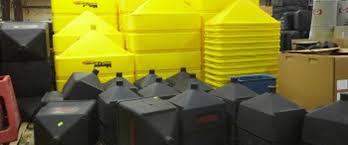
Issues to Consider When Manufacturing with Rotational Molding
Rotational molding can be a procedure accustomed to produce hollow plastic material merchandise. It is often utilized to make pieces for drinking water tanks, toys, as well as sizeable automobile elements. But exactly what is rotational molding and how can it job? Let’s check out the basics of Rotomolding so you will have a much better understanding of this beneficial producing procedure.
Precisely What Is Rotational Molding?
Rotomolding molding is a manufacturing procedure that uses temperature and pressure to make molten plastic-type into hollow styles. This process starts off with adding uncooked plastic-type materials in an open, steel mold that has been divided into two halves. The mold will be heated up up in a stove till the plastic-type material melts. Once melted, both halves from the mold are clamped together and rotated since they transfer through three axes—the X axis (horizontal), Y axis (vertical), and Z axis (diagonal). As being the items swivel, centrifugal push brings about the water plastic-type material to spread out equally down the indoor surface of the mold. This creates a slim level of plastic that adheres to any or all ends in the product or service when cooled down.
Advantages of Rotational Molding
1 major benefit of rotational molding over other plastic creating procedures is its capability to produce hollow pieces with complicated geometries. In addition, because no pressure or pressure is required to shape these parts, you will find a lot fewer defects and much less misused substance when compared with operations like injection or blow-molding. Also, since molds might be quickly changed between creation works with minimum effort or expenditure, rotational molding now offers shorter direct periods than many other developing functions. Ultimately, because it utilizes only temperature and gravitational forces during generation, it will require much less electricity than other operations do which makes it an eco friendly option for companies looking for eco friendly alternatives for their production requirements.
Conclusion:
Rotational Molding is among one of several valuable manufacturing processes now available that will help transform raw materials into completed items efficiently and quickly. By making use of warmth and movement, this technique produces complicated forms without incorporating any extra stress or strain around the materials simply being shaped which will help reduce squander while also reducing lead times compared to other approaches like injection or blow-molding. With its array of advantages of cost savings to enviromentally friendly friendliness, it’s no surprise why this technique has become very popular among suppliers searching for dependable remedies for their creation requirements!